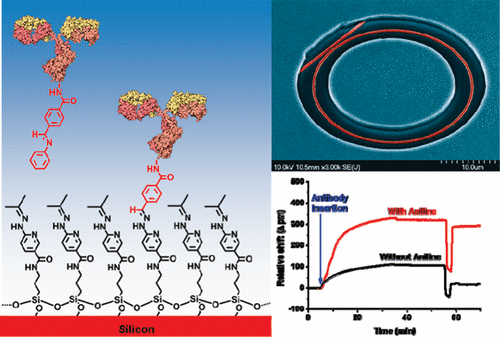Abstract
Aniline-catalyzed hydrazone ligation between surface-immobilized hydrazines and aldehyde-modified antibodies is shown to be an efficient method for attaching protein capture agents to model oxide-coated biosensor substrates. Silicon photonic microring resonators are used to directly evaluate the efficiency of this surface bioconjugate reaction at various pHs and in the presence or absence of aniline as a nucleophilic catalyst. It is found that aniline significantly increases the net antibody loading for surfaces functionalized over a pH range from 4.5 to 7.4, allowing derivatization of substrates with reduced incubation time and sample consumption. This increase in antibody loading directly results in more sensitive antigen detection when functionalized microrings are employed in a label-free immunoassay. Furthermore, these experiments also reveal an interesting pH-dependent noncovalent binding trend that plays an important role in dictating the amount of antibody attached onto the substrate, highlighting the competing contributions of the bioconjugate reaction rate and the dynamic interactions that control opportunities for a solution-phase biomolecule to react with a substrate-bound reagent.

